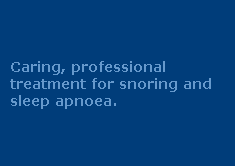Complex Sleep Apnoea
Complex sleep apnoea is the term used to describe a form of apnoea which is caused by two different factors.
The majority of apnoea sufferers experience 'obstructive sleep apnoea', where the soft tissue of the upper airway collapses and literally obstructs the airway. This is a physical condition and can usually be treated by removing or reducing the obstructing tissue. This is normally done by using mandibular advancement devices which hold the jaw and connected soft tissue clear of the airway, or by CPAP (constant positive airway pressurisation) to act as an air splint to keep the airway open, or by surgery to remove or reduce the problem tissue.
The other form of apnoea is 'central sleep apnoea', which is where the body does not try to breathe. This is a physiological condition which cannot typically be treated by the mechanical means mentiond earlier and so is much more challenged to deal with.
Complex sleep apnoea is not uncommon, but when it does exist the the number of central apnoeas is generally much lower than the number of obstructive apnoeas. Treatment of the obstructive sleep apnoea is therefore a major positive step forward in treatment.
Complete treatment of complex sleep apnoea, including treatment of the central apnoea events, requires extensive treatment via specialist sleep physicians and other medical experts.
To determine whether a patient suffers from obstructive sleep apnoea or complex sleep apnoea, it is necessary to undergo a polysomnogram (diagnostic sleep study). For more information about these studies, click here.

